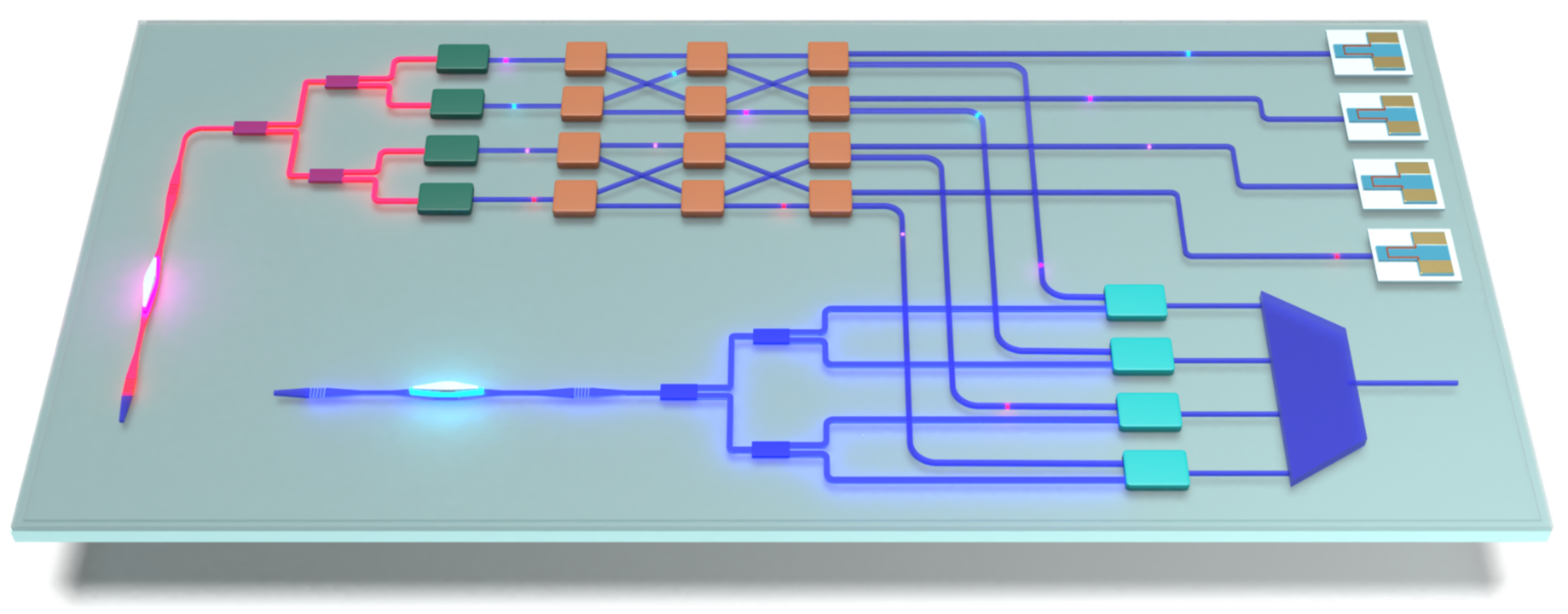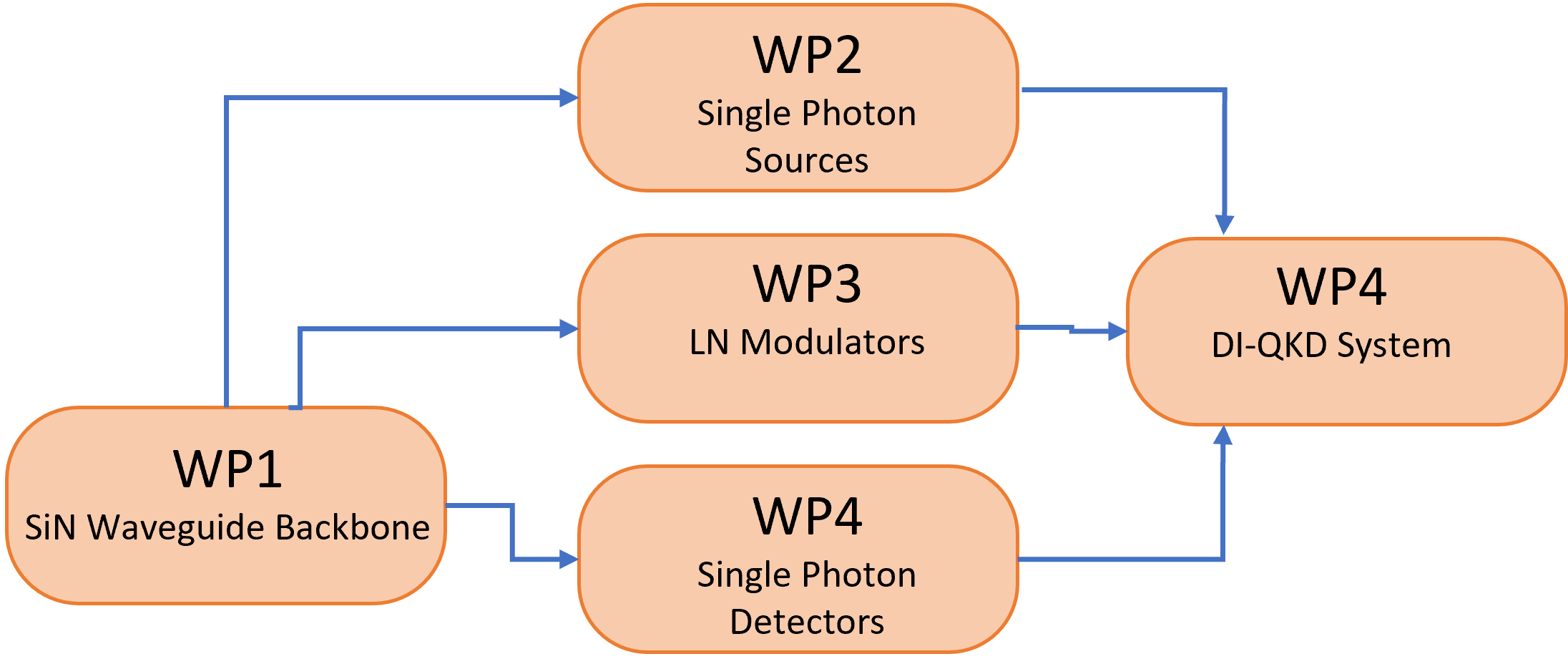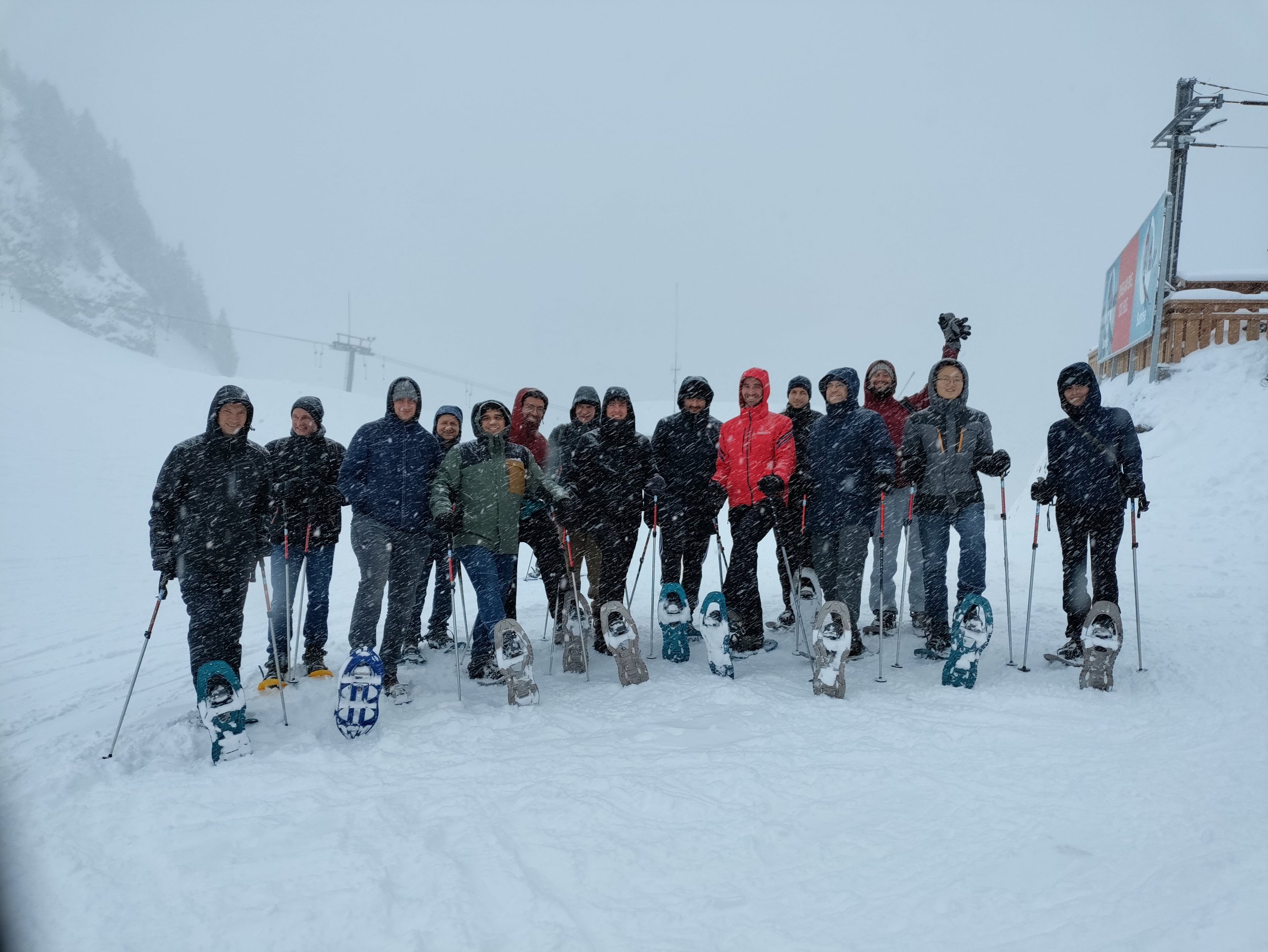
A versatile quantum photonic IC platform enabled by micro-transfer printing
A unified platform for quantum photonic integrated circuits
We will demonstrate the benefits of heterogeneous integration of different materials by combining InAs quantum dot emitters, Lithium Niobate modulators and switches, and superconducting detectors on a mature foundry-based silicon nitride waveguide interposer. To achieve such seamless integration between various well-established architectures, it is necessary to develop a robust and industry-ready baseline for cross-platform integration.
Micro-transfer printing enables full integration
uTP4Q will employ micro-transfer printing as the key technological framework for combining multiple functional technologies for quantum optical processing on a Silicon Nitride waveguide interposer. This is where uTP4Q is ground-breaking: for the first time we will integrate several building blocks of different nature on a single SiN waveguide interposer.
Single platform for multiple enabling demonstrators
Once developed, we will prove the viability and performance of our scalable platform by achieving the following unique demonstrators:
a plug-and-play single-photon source (SPS) integrated with Silicon Nitride waveguides with >90% coupling efficiency;
a lithium niobate pump pulse generator directly integrated with SPS;
superconducting detectors integrated on Silicon Nitride waveguides for counting photons from quantum dots with 25 ps timing resolution at a count rate up to 100 MHz, integrated with an on-chip SiN wavelength multiplexer;
Co-integration of single-photon sources with detectors exhibiting ultra-high local efficiency, for realizing a device-independent quantum key distribution apparatus.
Strong European collaboration
uTPforQ is a consortium consisting of the following collaborators:
Coordinator: Dries Van Thourhout (Ghent University, BE)
Wolfram Pernice (Heidelberg University, DE)
Leonardo Midolo (University of Copenhagen, DK)
Niels Hersoug (Sparrow Quantum, DK)
Janez Krc (Univerza v Ljubljani , SI)
Michel Despont, Hamed Sattari (Swiss Centre for Electronics and Microtechnology, CH)



